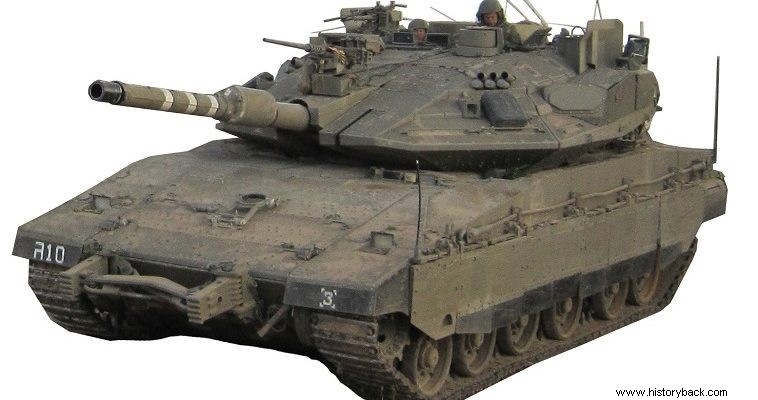
The Merkava has been the main battle tank of the Israeli army for years. Began development in the 1970s and entered service in 1979 (Merkava Mk I). The tank in its original version carried a 105 mm cannon. 7.62mm machine guns and a 60mm mortar. and had a weight of 63 tons. He acted in the Lebanon war in 1982.
The Merkava Mark II incorporated the lessons of said war. It had the same cannon but the mortar was inside the tank now. It had stronger armor and a new fire control system. Entered service in 1983 and remained in service until 1989. Produced in three sub-versions Mk IIB, Mk IIC, Mk IID.
The Merkava Mk III went into production from 1989 and remained in production until 2003. It had a more powerful 1,200 HP engine, 120 mm gun. MG251 new communications, optics and aiming systems and increased weight. In 1995 the improved Mk III BAZ was introduced, with extra armor and improved ballistic protection while the last sub-version was the Mk III Dor Dalet, from which the new technology Merkava Mk IV was derived.
The Mk IV is the latest version of the tank for now and development began in 1999 and was completed in 2004 when the first tanks entered service incorporating all lessons learned from previous operations. The tank has reinforced armor and armor parts that can be removed – for immediate replacement if damaged.
The projectiles of the 120mm MG253 gun. they are carried in special anti-fire canisters, for safety reasons, in the event of an impact. The gun can fire high-explosive anti-tank (HEAT) projectile-piercing kinetic energy projectiles (APFSDS). In total nearly 2,000 Merkavas of all models have been produced. The tanks have been used in all Israeli military operations with good results. About 20 were destroyed by Hezbollah anti-tanks in Lebanon in 2006.
The Merkava Mk IVM Windbreaker is the latest sub-version and features the Trophy active protection system. Also the Israeli Armed Forces (IDF) have started testing the first digital helmet for Merkava crews, something similar to the states of the F-35 pilots. The Iron Vision helmet allows 360° peripheral vision outside the tank, without the crew even opening the hatches.
Pantelis D. Karikas
